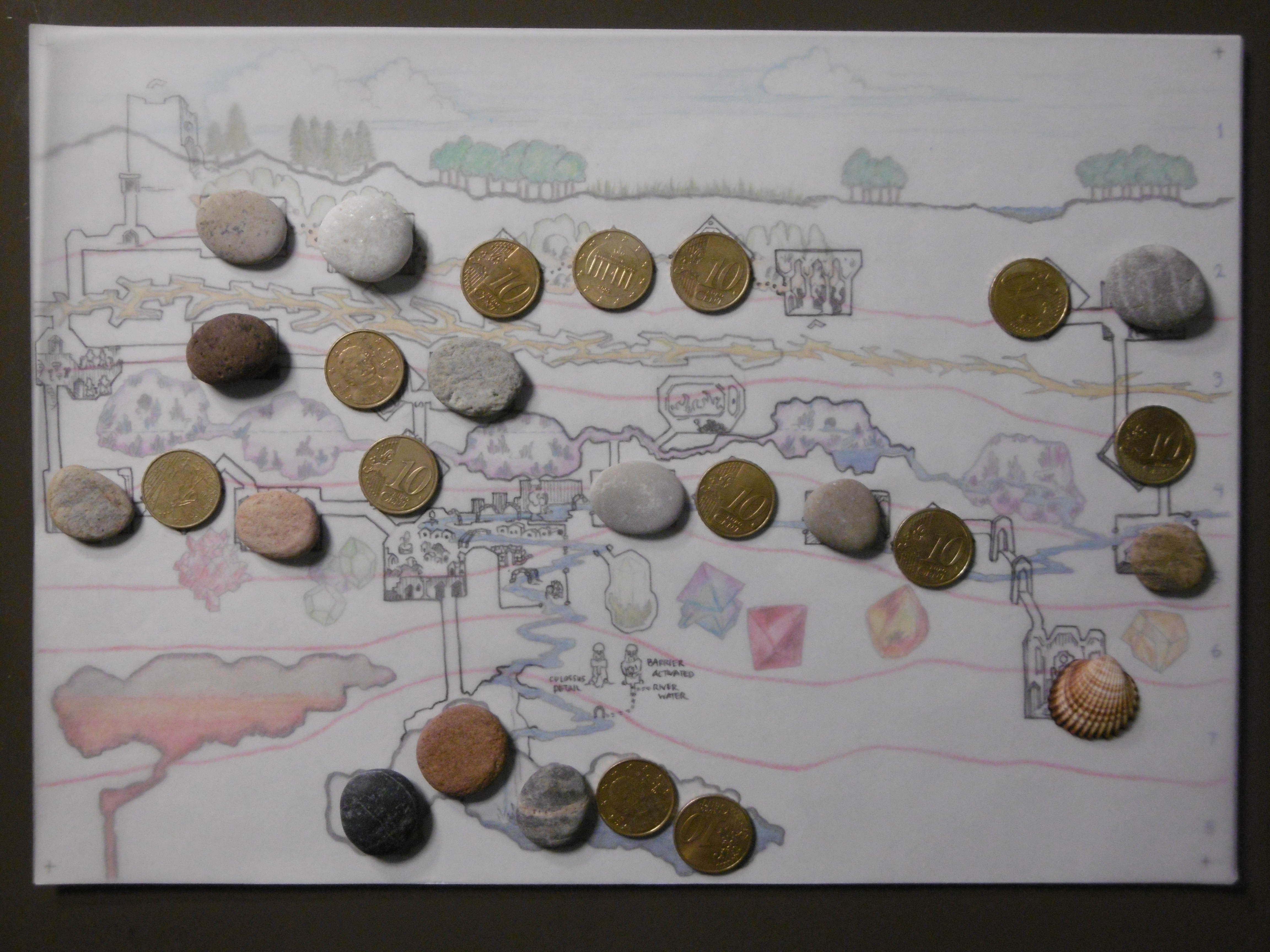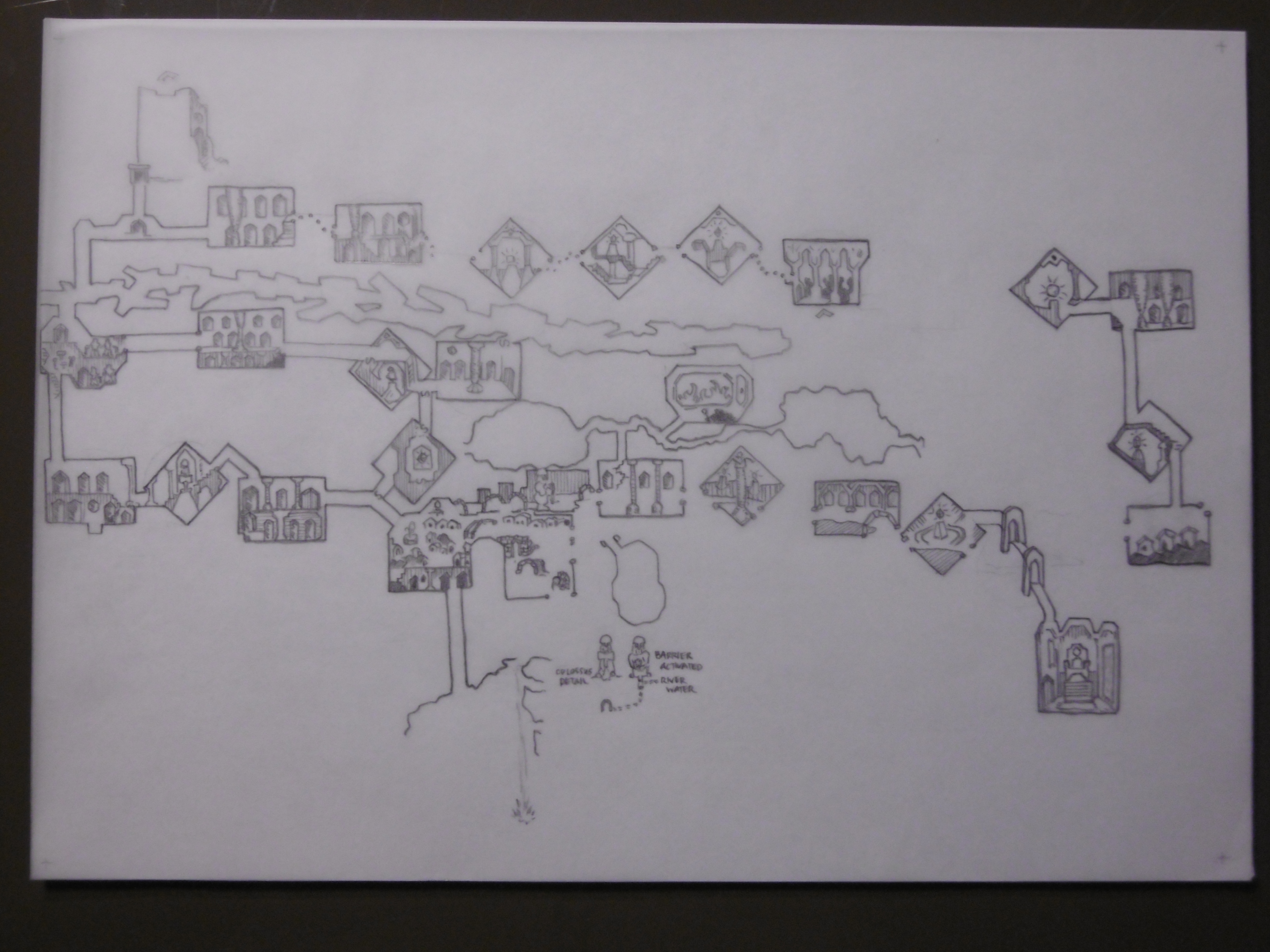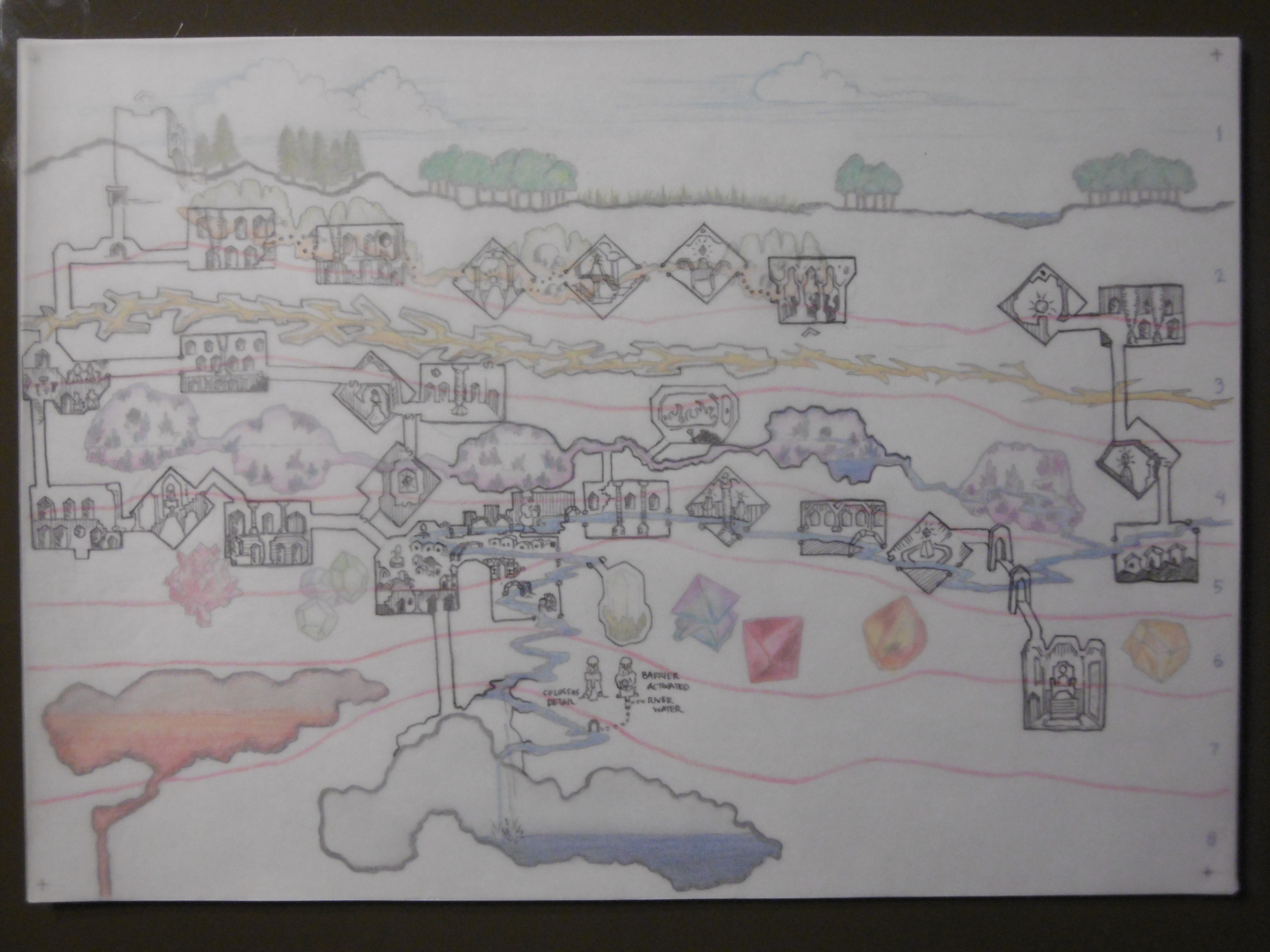Following the primordial earthquake that spawned the wyrm, seasons skipped across years, like stones on the river’s placid surface. Fairies frolicked in the primeval woods, while the river wound its way to the sea. Beneath it, water dripped from ceilings in subterranean caverns. Trickles crept between cold rock into dark flowing streams. Magma bubbled in deep chambers, and so, millennia passed while the wyrm slept, and the land, above and below, was quiet.
Then, wind rattled leaves in the old woods, and dwarves came rambling down from the western mountains. They sought gold, and they found it beneath the limestone hills and established a mine there. The vein was rich, the dwarves prospered, their number increased, and the Throrgrmir civilization, named for a founding father, was thus established.1
A note about the notes: As standard practice, I include the context in each footnote, so the reader may comfortably follow the narrative and read the notes afterward, using—if necessary—the superscript numbers for reference. The notes, while integral to the continuing story, are not essential to the immediate narrative.
As they mined the ore, the dwarves dug tunnels and built dormitories, treasure vaults, and workshops. Soon they caroused in a drinking hall,2 and a citadel3 enclosed the surface entrance to their underground domain.

On the map, I mimic Dowler’s shapes from How to Host a Dungeon, and since I’m learning to draw, I mimic the style as well. In this photo, the tokens obscure the dungeon. See bottom for the civilization’s overlay extracted and a composite of the primordial and civilization ages.
The dwarves built a city in a great cavern, which they excavated from around the subterranean river.4 They erected a colossal statue of the founding father, which straddled the river where it entered the city.5 Throrgrmir flourished in a golden age of growth and prosperity.
From the crystal caverns, they mined gypsum, with which they covered the walls of their dwellings and carved into statues and course glasswork. They built a furnace and melted crystal,6 thus producing fine glassware tinted pink and blue. Over the river, they built a great bridge and, beyond it, a throne room, whence an emperor ruled over a mighty domain.
Led by pride and the search for new wealth, the dwarves dug a shaft below the city. Cutting through the last layer of granite, the miners broke into red limestone. The limestone, more porous and fragile, crumbled beneath them. The miners fell, with a great mass of rock, into the deepest caverns, where slept the wyrm.7
Notes
1 From lists of Norse dwarf names (see below), I derived Throrgrmir: thror (boar) + grmir (mask). I see adventurers finding ancient treasures stamped with a symbol of the masked boar, and three syllables with only two vowels sounds goodly dwarvish to my ear. When my human tongue stumbles over the name, dwarves only grunt their amusement.
Dwarf name sources:
- Olive Bray’s translation of The Elder Edda contains an index. Start with the “dwarfs” entry, page 316.
- In addition to dwarf names, Nordic Names contains many categories, including Old Norse bynames, which will soon be useful.
- Wikipedia gives a comprehensive list with each dwarf name’s meaning and source. See also the source material in the References and General References sections.
2 Where the dwarves built inside the Dead Caverns (stratum 2), they used natural pathways between constructions. To guide travelers, they erected cairns along the paths (shown on the map). Counting five of these rock piles from the easternmost vault, one arrives at the drinking hall, known as “Sixth Cairn.”
3 I reserve the citadel’s face for a stylized symbol of the masked boar.
4 How to Host a Dungeon makes you think about things you might not otherwise consider. Example: While the dwarves used much of the excavated rock for building, future surface explorers will notice rubble strewn down hillsides and piled in ravines. Though it’s mostly limestone, also present are basalt and granite, the latter sometimes streaked with quartz. By then, the rubble may be covered by a layer of soil or overgrown by vegetation. Still, through close examination, clever delvers might infer, from the rubble, the existence of a nearby dungeon; from the amount, its size; and perhaps from the style of markings on discarded carvings, that dwarves built it. The presence of quartz, which often accompanies gold, might lead the greedy and the foolhardy to make bad decisions.
5 Note the detail inset of the colossal statue: In case of flood or invasion, the axe is lowered to dam the river and block the passage. Meanwhile, a chute opens in the hollow handle, which channels the flow through a tunnel to a point downstream, below the city.
6 Last week it was geology, this week I’m stretching chemistry thin over the fantasy. Some crystal, not selenite, can be melted into glass. In modern civilization, this decreases its value. But since glass is otherwise unknown in this age, Throrgrmir glassware is a valuable commodity in the milieu.
7 The dwarves’ blunder reformed the ceiling of the deepest cavern and deposited a huge pile of rubble into it, possibly creating an island in the lake. The event also rerouted the subterranean river, cutting it short and drying up the eastern loop.
milieu noun
pronounced mēl-yü
: the physical or social setting in which something occurs or develops : ENVIRONMENT[Popularized among old-school gamers by Gary Gygax, most notably in his Advanced D&D Dungeon Masters Guide (TSR Games, 1979), a 238-page work, wherein we find 72 instances.]


Pingback: Throrgrmir Citadel Under Construction – DONJON LANDS
Pingback: Viggo’s Histories – DONJON LANDS
Pingback: Wyrmlings – DONJON LANDS